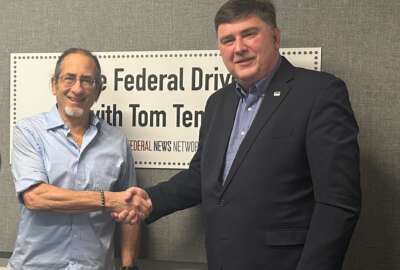New veteran, disability hiring goals won’t be quotas, Labor Dept. says
New regulations from the Labor Department spell out specific benchmarks federal contractors will be expected to meet regarding the hiring of veterans and people...
wfedstaff | April 17, 2015 5:28 pm
New regulations from the Labor Department spell out specific benchmarks federal contractors will be expected to meet regarding the hiring of veterans and people with disabilities.
But don’t call them quotas, says the head of the office that will enforce the new hiring targets.
“This is something for contractors to work toward,” said Patricia Shiu, director of the Office of Federal Contract Compliance Programs (OFCCP) in an interview on the Federal Drive with Tom Temin and Emily Kopp. “And the reason why it is not a quota is because if somebody does not actually attain the goal … there is no penalty, there is no fine, there is no sanction for not hitting the goal itself.”
The rules, which were first announced last week by Vice President Joe Biden at the national convention of the American Legion, set annual goals for contractors to hire and retain veterans. The benchmark is tied to the national percentage of veterans in the American labor force — currently 8 percent — and could fluctuate each year. The regulations, however, also allow contractors to adopt more targeted benchmarks as long as they adhere to Labor criteria.
Under the new rules, contractors should also aim to have people with disabilities make up at least 7 percent of the workers in each of their job categories. For smaller contractors that employ 100 people or fewer, the goal would apply to the entire workforce, not to every job category.
“We think these two rules are really important in terms of ensuring that people with disabilities and protected vets get a real chance at equal employment opportunity,” Shiu said.
But contractor groups have reacted with skepticism, arguing that reported rates of hiring discrimination by federal contractors are low and that the new rules are overly burdensome.
‘What gets measured, get’s done’
Shiu said the rules are designed to fill gaps in the regulatory framework.
“Part of the reason why we needed these regulations is that neither my agency or contractors — unless they do this voluntarily — really know who they have in their workplace,” Shiu said. “I can say that although there are some contractors who are leaders, who have tried to measure the number of people with disabilities in the workplace, many contractors don’t know. And so this is why it’s important to collect that data, so that we can begin to ensure that people with disabilities and vets actually get the jobs, and so that they keep the jobs that they’re in.”
Along with the new benchmarks, contractors are also required to keep detailed records, going back at least three years, on the number of veterans and people with disabilities who apply for jobs, as well as the number that are ultimately hired.
“What gets measured, gets done,” Shiu said. “And we know it’s going to take time; it’s a process. We will be evaluating on a case-by-case basis.”
A problem that doesn’t exist?
The Associated General Contractors of America, an industry group representing contractors in the construction sector, has been among the fiercest critics of the new rules.
“We have no problem and completely support the goals of these rules,” the group’s Executive Director for Public Affairs Brian Turmail told In Depth with Francis Rose in a recent interview. “We absolutely think it’s incumbent upon us as Americans and as federal contractors to hire veterans, to hire the disabled. Our point is, the data makes it clear we’re doing that — we don’t need hundreds of millions or billions in new costs to prove that.”
Turmail cited research from the Center for Corporate Equality, showing that of 871 veteran and disability complaints filed with the OFCCP between 2004 and the first half of 2012, less than 7 percent resulted in an actual finding of a violation.
“Expanding the regulatory framework to get even more data when we already know what’s happening in terms of employment trends is a real expensive way to solve a problem that the data says doesn’t exist,” Turmail said.
But Shiu said the type of data Labor wants contractors to maintain regarding veteran and disability hiring is not without precedent.
“All federal contractors are required to keep certain records,” Shiu said. “That’s one of the bases for being a federal contractor: You have to have an affirmative action plan, you have to keep hiring data, you have to keep certain other demographic data. And that’s nothing new — that’s been in place since the 1960s.”
Alan Chvotkin, executive vice president and counsel of the Professional Services Council, said the Labor Department’s aims are worthwhile, but he predicted significant challenges for contractors in implementing the new rules.
“The rule is very clear that it’s not a quota … it’s an objective,” he said. “But if it looks like a duck and quacks like a duck — and you have all the compliance bells and whistles that goes along with it — it’s going to be a burden on companies to try to demonstrate why they didn’t meet that objective.”
RELATED STORIES:
New rules set veteran, disability hiring benchmarks for federal contractors
Feds make progress in disability hiring, but lofty goal looms large
OPM tries to make disability hiring easier
Copyright © 2025 Federal News Network. All rights reserved. This website is not intended for users located within the European Economic Area.





